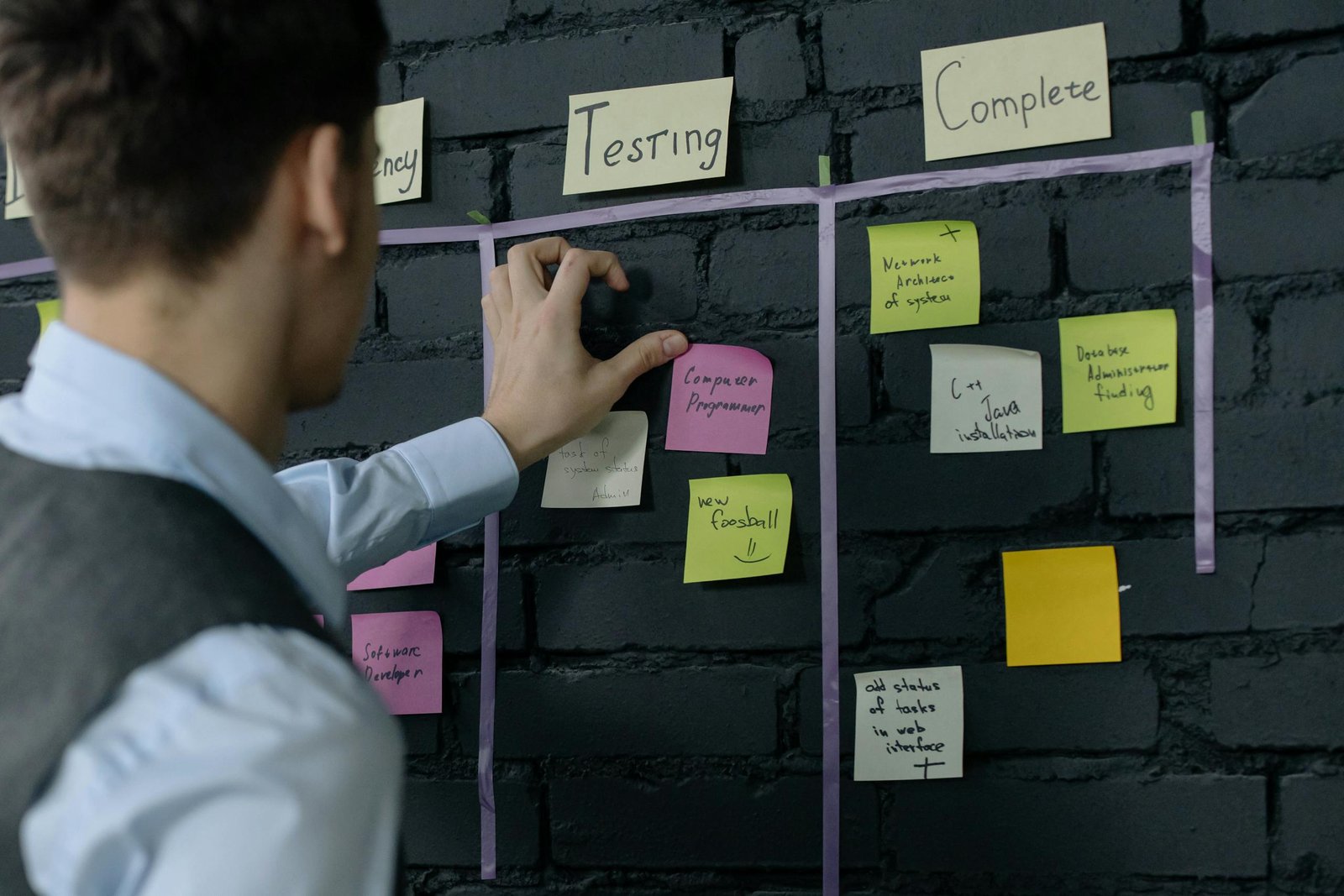In a fast-paced work environment, it’s easy to feel overwhelmed by a growing to-do list. Knowing how to prioritize tasks and stay focused can significantly improve your productivity and reduce stress. Effective task prioritization helps you identify what’s most important, while staying focused ensures that you complete your work efficiently and without distractions.
In this article, we’ll explore the 8 top ways to prioritize tasks and maintain focus, helping you make the most of your time and achieve your goals.
Quick Preview:
- Use the Eisenhower Matrix: A proven tool for prioritizing tasks based on urgency and importance.
- Time Blocking: Structure your day by allocating specific time slots for focused work on key tasks.
- Set SMART Goals: Create clear, measurable goals to keep you focused on what truly matters.
1. Use the Eisenhower Matrix
The Eisenhower Matrix, also known as the Urgent-Important Matrix, is a powerful tool for prioritizing tasks based on their urgency and importance. It divides tasks into four quadrants, allowing you to focus on what truly matters and eliminate or delegate less important tasks.
How the Eisenhower Matrix Works:
- Quadrant 1: Urgent and Important – Do these tasks immediately (e.g., deadlines, critical issues).
- Quadrant 2: Important but Not Urgent – Plan these tasks for later (e.g., strategic planning, personal development).
- Quadrant 3: Urgent but Not Important – Delegate these tasks if possible (e.g., interruptions, minor requests).
- Quadrant 4: Not Urgent and Not Important – Eliminate or minimize these tasks (e.g., distractions, unnecessary activities).
By focusing on Quadrants 1 and 2, you can prioritize tasks that have the biggest impact on your goals and avoid getting bogged down by urgent but less important activities.
Takeaway: Use the Eisenhower Matrix to categorize tasks based on their urgency and importance, helping you stay focused on high-priority work.
2. Time Blocking for Focused Work
Time blocking is a simple but effective method for managing your day by dedicating specific time slots for different tasks. By assigning blocks of time to each activity, you avoid multitasking and ensure you have uninterrupted focus on your most important tasks.
How to Implement Time Blocking:
- Schedule Key Tasks: Block off time on your calendar for important tasks (e.g., 9-11 AM for project work, 2-3 PM for email).
- Batch Similar Tasks Together: Group similar tasks, such as answering emails or making phone calls, into one time block to reduce context switching.
- Protect Your Focus Time: Treat time blocks as non-negotiable and minimize interruptions by turning off notifications or setting boundaries with colleagues.
For example, if you have a big report to write, block out a few hours in the morning when your focus is at its peak. During this time, eliminate distractions and concentrate solely on completing the task.
Takeaway: Time blocking helps you stay organized and focused by scheduling dedicated periods for key tasks, reducing the risk of multitasking.
3. Set SMART Goals
Setting SMART goals (Specific, Measurable, Achievable, Relevant, Time-bound) helps you prioritize tasks by clearly defining what needs to be done, how it will be measured, and when it should be completed. This ensures that your tasks align with larger objectives and that you focus on meaningful work.
How to Set SMART Goals:
- Specific: Define exactly what needs to be accomplished.
- Measurable: Establish how you will measure success.
- Achievable: Make sure the goal is realistic.
- Relevant: Ensure it aligns with your broader career or personal goals.
- Time-bound: Set a clear deadline.
For example, instead of setting a vague goal like “improve marketing efforts,” a SMART goal would be, “Increase website traffic by 15% in the next three months through targeted social media campaigns and SEO improvements.”
Takeaway: SMART goals provide clarity and focus, helping you prioritize tasks that contribute to long-term success.
4. Use the 2-Minute Rule for Quick Tasks
The 2-Minute Rule, popularized by productivity expert David Allen, is an excellent technique for managing small tasks efficiently. The rule states: If a task can be completed in two minutes or less, do it immediately. This prevents minor tasks from piling up and becoming overwhelming.
How to Apply the 2-Minute Rule:
- Identify Quick Wins: Look for small tasks like responding to an email, making a quick call, or organizing a file.
- Take Immediate Action: Instead of delaying these tasks, complete them right away to clear them off your list.
For example, if you receive a quick request to approve a document, handle it immediately instead of letting it sit in your inbox. This keeps your workload manageable and prevents procrastination on simple tasks.
Takeaway: The 2-Minute Rule helps you clear small, quick tasks immediately, reducing clutter and keeping you focused on larger priorities.
5. Prioritize Tasks Using the ABCDE Method
The ABCDE Method, developed by author Brian Tracy, is a simple and effective way to prioritize tasks based on their impact and urgency. In this method, tasks are categorized into five levels:
How to Apply the ABCDE Method:
- A Tasks: Very important and must be done (high-priority tasks that have serious consequences if not completed).
- B Tasks: Important but not as critical (tasks with consequences, but less severe).
- C Tasks: Nice to do, but no significant consequences (tasks that don’t impact your goals if delayed).
- D Tasks: Delegate these tasks to others.
- E Tasks: Eliminate these tasks as they are unnecessary.
Start each day by identifying your A tasks, then move on to B tasks once the critical work is completed. This approach ensures you tackle the most important items first, rather than getting distracted by less impactful activities.
Takeaway: The ABCDE Method is a practical approach to prioritizing tasks based on their significance, helping you stay focused on high-impact work.
6. Avoid Multitasking
Multitasking may seem like a time-saver, but it often reduces productivity and leads to mistakes. Research shows that multitasking decreases focus and makes it harder to complete tasks efficiently. Instead, focus on single-tasking—working on one task at a time to ensure better quality and faster completion.
How to Avoid Multitasking:
- Focus on One Task: When working on a specific project, avoid switching to other tasks or checking emails.
- Use Time Blocking: Dedicate specific time blocks to one task at a time (e.g., 30 minutes for writing, 20 minutes for answering emails).
- Eliminate Distractions: Turn off notifications or set your phone to “Do Not Disturb” to stay focused.
For example, instead of switching between writing a report and answering emails, focus on completing the report before moving on to your inbox. This ensures you give your full attention to the task at hand.
Takeaway: Focus on single-tasking rather than multitasking to boost efficiency and ensure high-quality work.
7. Limit Distractions
Distractions—such as social media, phone notifications, or interruptions from colleagues—are one of the biggest productivity killers. To stay focused on your tasks, it’s important to limit distractions and create an environment conducive to deep work.
How to Minimize Distractions:
- Turn Off Notifications: Silence your phone and disable pop-up notifications on your computer.
- Create a Focused Workspace: Set up a quiet, clutter-free workspace that promotes concentration.
- Set Boundaries: Let colleagues or family members know when you’re in “focus mode” and prefer not to be disturbed.
Tools like website blockers (e.g., StayFocusd or Freedom) can help you limit access to distracting websites during work hours, keeping your attention on the task at hand.
Takeaway: Reducing distractions helps you stay focused, ensuring that you complete tasks more efficiently and without interruptions.
8. Review and Adjust Your To-Do List Daily
To maintain focus and stay on top of your tasks, it’s essential to review and adjust your to-do list daily. This allows you to stay flexible and adapt to changing priorities or unexpected tasks.
How to Manage Your To-Do List:
- Start Each Day with a Plan: Review your list of tasks at the beginning of each day, prioritizing high-impact work and eliminating non-essential items.
- Evaluate Progress: At the end of the day, evaluate what you’ve accomplished and adjust your list for the next day.
- Stay Flexible: Be prepared to reprioritize tasks as new deadlines or challenges arise.
A daily review of your to-do list ensures that you stay organized, focused, and on track to achieve your goals.
Takeaway: Regularly reviewing and adjusting your to-do list keeps you aligned with your priorities and helps you stay focused on what matters most.
Conclusion: Prioritizing Tasks and Staying Focused
Effectively prioritizing tasks and maintaining focus are essential for boosting productivity and achieving your goals. By using tools like the Eisenhower Matrix and the ABCDE Method, practicing time blocking, setting SMART goals, and minimizing distractions, you can take control of your workload and make steady progress toward success. These strategies will help you navigate even the busiest days with confidence and clarity.






